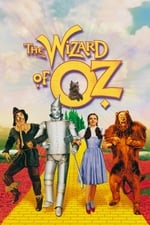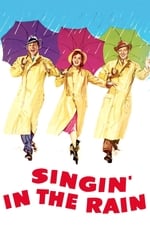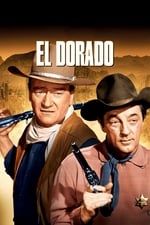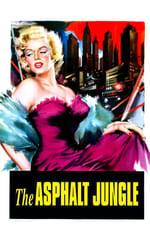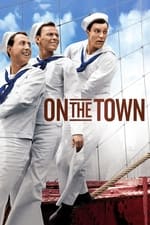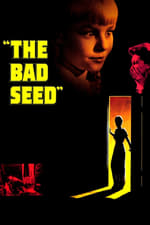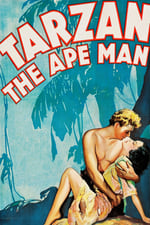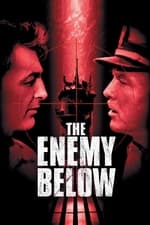Información personal
Conocido por Cámara
Créditos conocidos 110
Sexo Masculino
Fecha de nacimiento 6 de abril de 1895
Fecha de defunción 6 de septiembre de 1988 (93 años)
Lugar de nacimiento New York City, New York, USA
También conocido como
- Harold G. Rosson
- Hal Rosson
Puntuación del contenido
100
¡Sí! ¡Buena pinta!
Iniciar sesión para informar de un problema
Biografía
From Wikipedia
Harold G. "Hal" Rosson, A.S.C. (April 6, 1895 – September 6, 1988) was an American cinematographer who worked during the early and classical Hollywood cinema. He is best known for his work on the 1939 fantasy film The Wizard of Oz.
Harold Rosson began his film career in 1908 as an actor at the Vitagraph Studios in the Flatbush area of Brooklyn, New York City. He became the assistant to Irvin Willat at the Mark Dintenfass Studios. In 1912 he divided his time as an office boy in a stockbrokers firm and as an assistant, extra, and handyman at the Famous Players Studio in New York. His first film for Famous Players was David Harum (1915).
In December 1914, Rosson moved to California and joined Metro Pictures. During World War I, he served in the United States Army. After his demobilization, he went to work on the Marion Davies film The Dark Star. He was offered a contract with the Davies Company. In 1920 he was signed by Mary Pickford, working primarily with her brother Jack Pickford.
In the 1930s, Rosson signed with Metro-Goldwyn-Mayer and directed the photography for some of the studio's most popular films including Treasure Island (1934), The Wizard of Oz, Duel in the Sun, and Singin' in the Rain (1952). In 1936, Rosson and fellow cinematographer W. Howard Greene were awarded an Honorary Oscar for the color cinematography of the 1936 David O. Selznick production The Garden of Allah. Rosson later said it was the first time he attempted to film in color.
After a very long and successful career in Hollywood, Rosson retired in 1958. He briefly came out of retirement in 1966 for the Howard Hawks film El Dorado starring John Wayne.
Rosson was married twice, with both marriages ending in divorce, and had no children. While shooting the film Bombshell in 1933, actress Jean Harlow proposed to Rosson. The two had worked together previously on Red-Headed Woman, Dinner at Eight, Hold Your Man, and Red Dust and had struck up a friendship. On September 17, 1933, the two were married in Yuma, Arizona. In an interview with Leicester Wagner, Harlow recalled that she and Rosson grew closer after the death of her second husband, Paul Bern, and he encouraged her to go out and socialize. Rosson and Harlow separated in May 1934 with Harlow charging that Rosson was "rude, sullen and irritable". She was granted a divorce in March 1935.
On October 11, 1936, Rosson married socialite Yvonne Crellin in Beverly Hills. They divorced in June 1945.
On September 6, 1988, Rosson died, age 93, at his home in Palm Beach, Florida. He is buried in Hollywood Forever Cemetery.
From Wikipedia
Harold G. "Hal" Rosson, A.S.C. (April 6, 1895 – September 6, 1988) was an American cinematographer who worked during the early and classical Hollywood cinema. He is best known for his work on the 1939 fantasy film The Wizard of Oz.
Harold Rosson began his film career in 1908 as an actor at the Vitagraph Studios in the Flatbush area of Brooklyn, New York City. He became the assistant to Irvin Willat at the Mark Dintenfass Studios. In 1912 he divided his time as an office boy in a stockbrokers firm and as an assistant, extra, and handyman at the Famous Players Studio in New York. His first film for Famous Players was David Harum (1915).
In December 1914, Rosson moved to California and joined Metro Pictures. During World War I, he served in the United States Army. After his demobilization, he went to work on the Marion Davies film The Dark Star. He was offered a contract with the Davies Company. In 1920 he was signed by Mary Pickford, working primarily with her brother Jack Pickford.
In the 1930s, Rosson signed with Metro-Goldwyn-Mayer and directed the photography for some of the studio's most popular films including Treasure Island (1934), The Wizard of Oz, Duel in the Sun, and Singin' in the Rain (1952). In 1936, Rosson and fellow cinematographer W. Howard Greene were awarded an Honorary Oscar for the color cinematography of the 1936 David O. Selznick production The Garden of Allah. Rosson later said it was the first time he attempted to film in color.
After a very long and successful career in Hollywood, Rosson retired in 1958. He briefly came out of retirement in 1966 for the Howard Hawks film El Dorado starring John Wayne.
Rosson was married twice, with both marriages ending in divorce, and had no children. While shooting the film Bombshell in 1933, actress Jean Harlow proposed to Rosson. The two had worked together previously on Red-Headed Woman, Dinner at Eight, Hold Your Man, and Red Dust and had struck up a friendship. On September 17, 1933, the two were married in Yuma, Arizona. In an interview with Leicester Wagner, Harlow recalled that she and Rosson grew closer after the death of her second husband, Paul Bern, and he encouraged her to go out and socialize. Rosson and Harlow separated in May 1934 with Harlow charging that Rosson was "rude, sullen and irritable". She was granted a divorce in March 1935.
On October 11, 1936, Rosson married socialite Yvonne Crellin in Beverly Hills. They divorced in June 1945.
On September 6, 1988, Rosson died, age 93, at his home in Palm Beach, Florida. He is buried in Hollywood Forever Cemetery.
Cámara
|
||||||||||||||||||
|
||||||||||||||||||
|
||||||||||||||||||
|
||||||||||||||||||
|
||||||||||||||||||
|
||||||||||||||||||
|
||||||||||||||||||
|
||||||||||||||||||
|
||||||||||||||||||
|
||||||||||||||||||
|
||||||||||||||||||
|
||||||||||||||||||
|
||||||||||||||||||
|
||||||||||||||||||
|
||||||||||||||||||
|
||||||||||||||||||
|
||||||||||||||||||
|
||||||||||||||||||
|
||||||||||||||||||
|
||||||||||||||||||
|
||||||||||||||||||
|
||||||||||||||||||
|
||||||||||||||||||
|
||||||||||||||||||
|
||||||||||||||||||
|
||||||||||||||||||
|
||||||||||||||||||
|
||||||||||||||||||
|
||||||||||||||||||
|
||||||||||||||||||
|
||||||||||||||||||
|
||||||||||||||||||
|
||||||||||||||||||
|
||||||||||||||||||
|
||||||||||||||||||
|
||||||||||||||||||
|
||||||||||||||||||
|
||||||||||||||||||
|
||||||||||||||||||
|
Equipo
|
||||||
|
||||||
|
||||||
|
||||||
|
||||||
|
||||||
|
Interpretación
|

